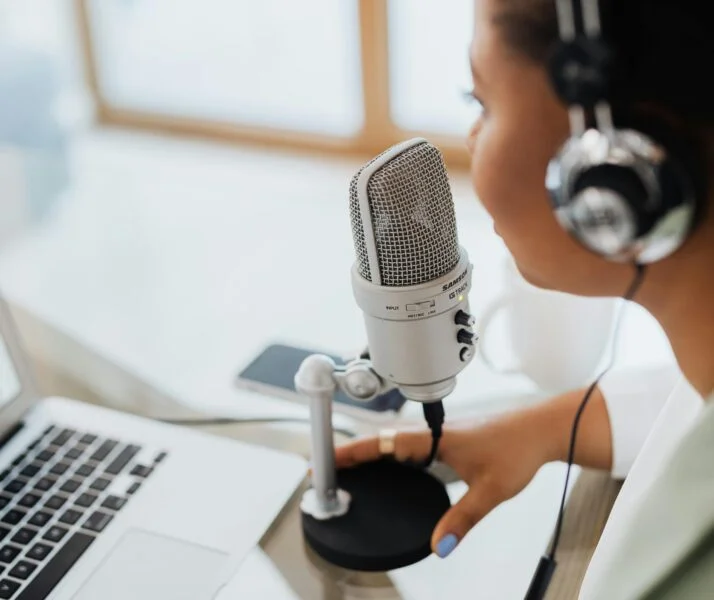
Introduction to radio advertising
With all the marketplace buzz about podcasts, YouTube, and streaming music services like Spotify, Apple Music, and Pandora, it’s easy to underestimate the power of AM/FM radio. Yet, the reality is that radio usage, ad penetration, and effectiveness are as potent as ever.
AM/FM radio remains a powerhouse for audiences and advertisers alike, according to Edison Research’s Share of Ear, recently released in Q3 2024:
- AM/FM radio is the dominant ad-supported audio platform across every major demographic, capturing 69% total time spent.
- AM/FM radio has an 86% share of time spent driving, even among younger audiences 13 to 34 years old.
- Streaming music growth has come at the expense of owned music—not of AM/FM radio usage.
All the data continues to back radio, yet perceptions among media buyers don’t always line up with the reality of listening habits. As marketing professor Mark Ritson reminds us, “There is increasing global evidence that marketers are basing their media choices on their own behavior or that stoked by the digitally obsessed marketing media, rather than actual audience data … The first law of marketing is that you are not the market. You are an urban, professional, well-paid media executive. Everything you think and do is from a highly unrepresentative N of 1.”
Today, radio is often such a small part of many national media investments that media mix modeling studies may not capture an accurate picture of radio due to “performance bounce.” The media mix model favors larger media investments, creating a curve of variability that doesn’t reflect how consistently radio delivers on key KPIs.
What are the advantages of radio advertising?
AM/FM advertising is a critical channel for advertisers due to three distinct advantages: affordability, reach, and high return on investment (ROI) / return on ad spend (ROAS).
Affordability: How much does radio advertising cost?
- The average cost of a 60-second radio advertisement ranges from $5 to $750 or more when measured by cost per point (CPP). Factors that impact radio advertising costs include audience size, listener demographics, time of day, the market in which the ad runs, and whether the ad is sponsored or not.
- As a rule, the more listeners a radio station has, the more customers it can reach, increasing its radio advertising rates.
- The cost of entry for AM/FM radio advertising is considerably less than other broadcast-type mediums.
Read more: How Much Does Radio Advertising Cost?
Ability to reach a broad audience: Who does radio reach?
In 2024, AM/FM radio retained its lead over other platforms for reach:
- Among listeners 18 and older, radio’s 84% reach puts it ahead of social networking on smartphones (78%), CTV (74%), and traditional TV (58%).
- Among ad-supported audio, radio has the highest share of time spent, capturing 69% of listening time for adults 18 and older, which is more than podcasts (19%) and ad-supported streaming (3% to 5%).
- Radio ads deliver incremental reach, typically around 14 points.
- Even among the first truly digitally native generation, Gen Z, radio listening time (20%) falls just below YouTube (23%).
High ROI/ROAS—and the case studies to back it up
Radio advertising campaigns are cost-effective and can deliver outsized performance. Here are a few recent examples of advertisers who ran highly successful AM/FM campaigns in terms of ROI and ROAS :
- Office Supply Retailer: Nielsen Sales Effect Study: AM/FM Radio Campaign Grows Sales +11%, Increases Customer Base +6%, and Expands Share of Category Spend +21%
- Department Store: Nielsen Sales Effect Study: AM/FM Radio Campaign Grows Sales +10%, Increases Customer Base +17%, and Expands Share of Category Spend +15%
- US Auto Dealers: Need to Increase Their AM/FM Radio Advertising to Reach Consumer Who Are Ready to Buy
What makes a radio advertisement campaign effective?
The key aspects of radio advertisement success include effective media planning and high-performing creative.
Effective radio campaign planning: Set appropriate weight levels
When planning your media investments, consider the following questions before securing radio advertising placements:
- What other media is planned?
- What are the latest market dynamics?
- Who are our target demographics?
- What are your audience’s interests and affinities?
- Will the time of year impact this campaign in any way?
- What is the typical product purchase cycle?
High-performing creative: Memorability starts with great copy and creative
Follow these best practices to make your message shine:
- Consistency is key. From the music to the call to action, be consistent in your creative. Audiences should recognize your brand before your name is ever mentioned in the ad. Consistency is a crucial part of audio branding that creates instant recognition.
- Stay focused. Each radio spot should convey one message. Radio does not offer an option for user-initiated extended engagement like internet ads do, so make the message short, clear, and tailored to your audience.
- Keep it simple. Having a simple call-to-action (CTA) goes hand in hand with focused messaging. Make the listener’s next step clear and easy.
Get Inspired: Radio Advertising Types & Examples
How to measure the effectiveness of radio advertising campaigns
With lots of digital channels vying for attention from consumers and marketers alike, brands must set themselves up for success by choosing appropriate KPIs and effectively measuring performance.
Whether your brand’s goals are to increase web traffic or boost brand awareness, radio has the power to deliver.
Reach
One of the most important measures of success is how well you reached your target audience. It is important to plan against reach during the media planning process and measure overall delivery post-flight with various methodologies such as diaries and set-top boxes.
Brand awareness, brand perception
Brand lift or brand awareness studies are survey-based methods of measuring howAM/FM advertising impacts an audience’s perception of a brand, product, or service. These surveys can be delivered when audiences arrive at your website or after they make a purchase.
Website traffic, site visits
Compare your total number of website visitors from before and after you began running radio ads to gauge any increase. Alternatively, a vanity URL can more directly attribute traffic.
Total sales, new customer/user acquisition
Year-over-year and month-over-month analyses can reveal if sales or user acquisition are up or down and whether any changes can be correlated to radio advertising campaigns. Radio-specific promo codes can directly attribute sales or new user adoption to specific campaigns.
Return on investment (ROI)/Return on ad spend (ROAS)
When it comes to quantifying ROI for radio campaigns, the simplest method is to calculate your overall return on ad spend (ROAS). ROAS is calculated by dividing the revenue attributable to radio ads by the total amount spent on the radio ads. This illustrates how radio performed for your unique brand, market, and goals.
Where should radio advertising fit into your marketing strategy?
Given the data on radio advertising effectiveness, radio may be a natural addition to the media mix for many brands. When incorporating radio into any marketing strategy, optimization starts with holistic consideration of your media plan.
Cross-channel attribution
A comprehensive view of broadcast and digital attribution can help decision-makers decide the most appropriate resource allocation. By integrating data from radio and other channels, it’s easier to make decisions about where to increase or reduce spend. Looking at historical and cross-channel performance data can also help optimize the media mix.
Radio’s synergy with digital
Radio advertising complements digital channels and creates a powerful multiplier effect. Brands integrating radio with other channels achieve increased efficiency overall. With just 11% of budget, radio has the potential to double the efficacy of a multi-channel campaign.
Radio’s synergy with social media, paid search, and other audio and digital channels is an important consideration for media planners. Experimentation and robust measurement make it easier to identify the right-sized investments.
Looking ahead: Future trends in radio advertising
Radio listenership has remained resilient even as the media landscape evolves. Given its track record, the future is bright for radio and the advertisers who invest there. In 2025 and beyond, we’ll see radio integrate with emerging technologies, increased cross-border potential, and the rise of AI-powered personalization.
Digital expansion
Radio is adapting to the increasingly digital landscape with offerings like hybrid radio, which combines traditional shortwave broadcasts with digital streaming; BBC, for example, now has a popular hybrid station. Additionally, advertisers may integrate interactive elements into their ads for use on smart speaker devices.
Cross-border footprints
As markets become increasingly global, many brands are looking to expand their geographic footprints. Radio is particularly adaptable to different cultures and languages. Creating localized campaigns for new markets also has the potential to improve profits and establish brands as global players. Radio networks enable seamless entry into these markets in an impactful way with penetration even into hard-to-reach segments. These global opportunities have never been more within reach thanks to generative AI. AI services like DeepL Voice,Transifex, and Bard are all powering linguistically nuanced and context-driven AI translation for audio ads and beyond.
AI
It’s hard to talk about the future of advertising without talking about AI. AI-powered algorithms are shaping a new era of tailored experiences for radio listeners. For example, many radio stations are leveraging AI to deliver personalized content across their channels. Recently, we even saw the launch of the first-ever AI radio host on terrestrial radio.
Conclusion: Does radio advertising work?
Radio is a quintessential listening option for people around the globe. With its broad reach, affordability, and consistent performance, radio advertising will deliver in 2025 just as it has in previous decades.
With dedicated and captive audiences across demographics, radio advertising drives measurable outcomes for brands while enhancing the overall impact of multi-channel campaigns. What’s not to love?
Ready to integrate or optimize radio placements to reach your big goals this year? ARM’s team of audio experts is equipped with all the insights, data, and tools to amplify your impact through the time-tested power of radio. Let’s talk about how radio can work for you.


